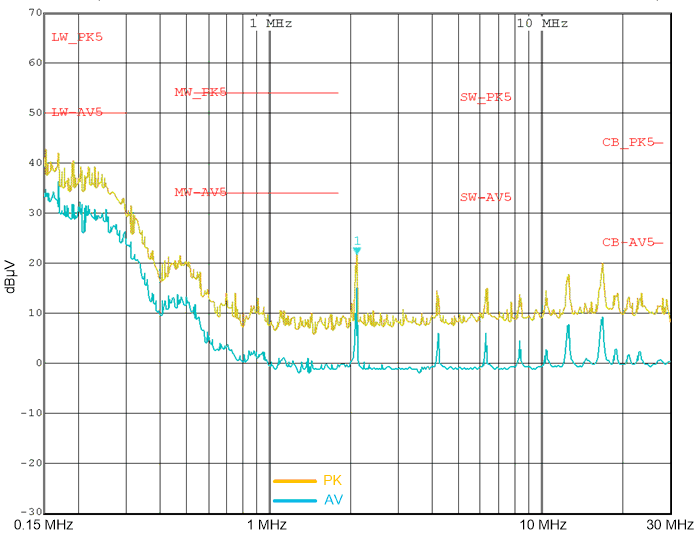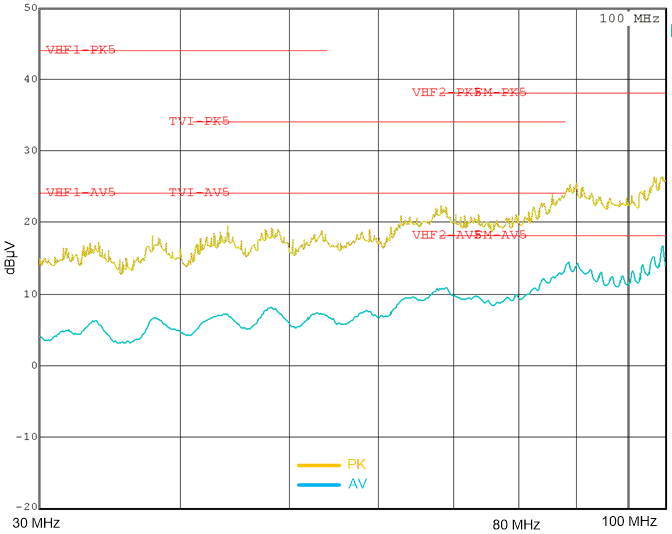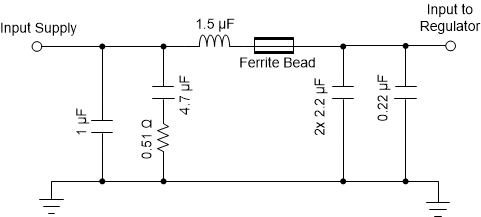SNVSB55H February 2019 – June 2024 LM63615-Q1 , LM63625-Q1
PRODUCTION DATA
- 1
- 1 Features
- 2 Applications
- 3 Description
- 4 Device Comparison Table
- 5 Pin Configuration and Functions
- 6 Specifications
- 7 Detailed Description
- 8 Application and Implementation
- 9 Device and Documentation Support
- 10Revision History
- 11Mechanical, Packaging, and Orderable Information
8.2.5 EMI Performance Curves
EMI results critically depend on PCB layout and test setup. The results given here are typical and given for information purposes only. Figure 8-45 shows the used EMI filter. The limit lines shown refer to CISPR25 class 5.

| LM63625DQ | VOUT = 5 V | ƒSW = 2100 kHz |
| IOUT = 2.5 A | Dither |

| LM63625DQ | VOUT = 5 V | ƒSW = 2100 kHz |
| IOUT = 2.5 A | Dither |

A. Input filter used only for EMI measurements shown in the Section 8.2.5 section.
Figure 8-47 Typical Input EMI Filter